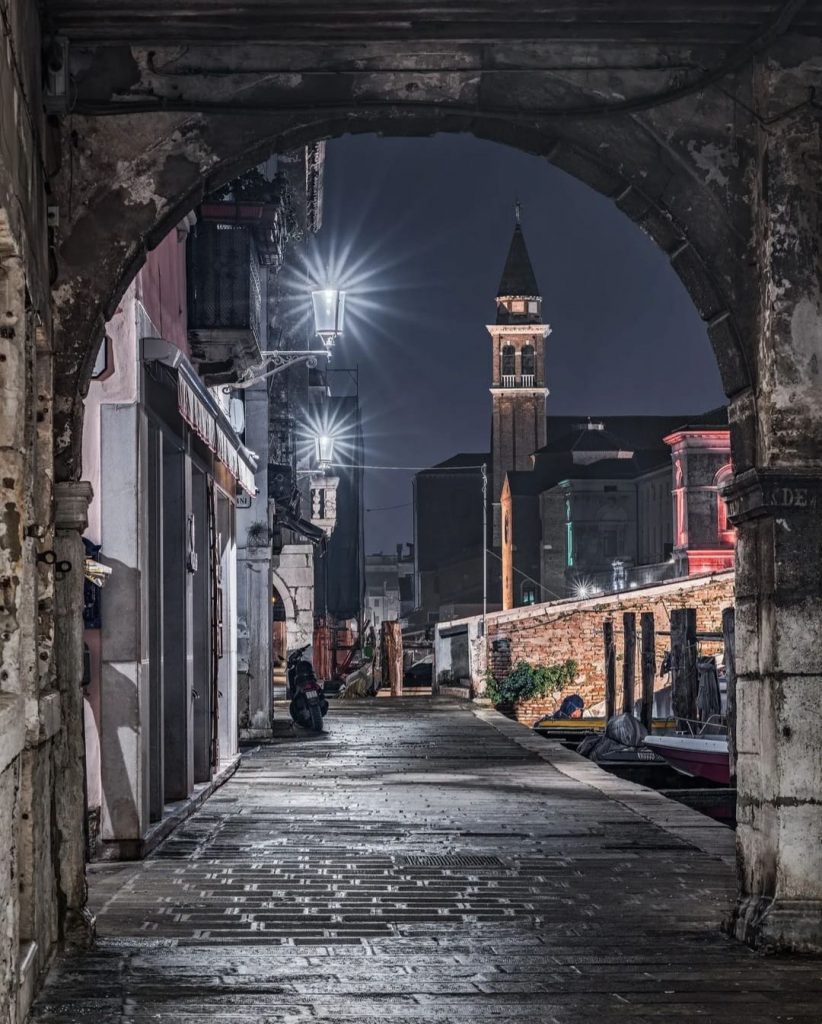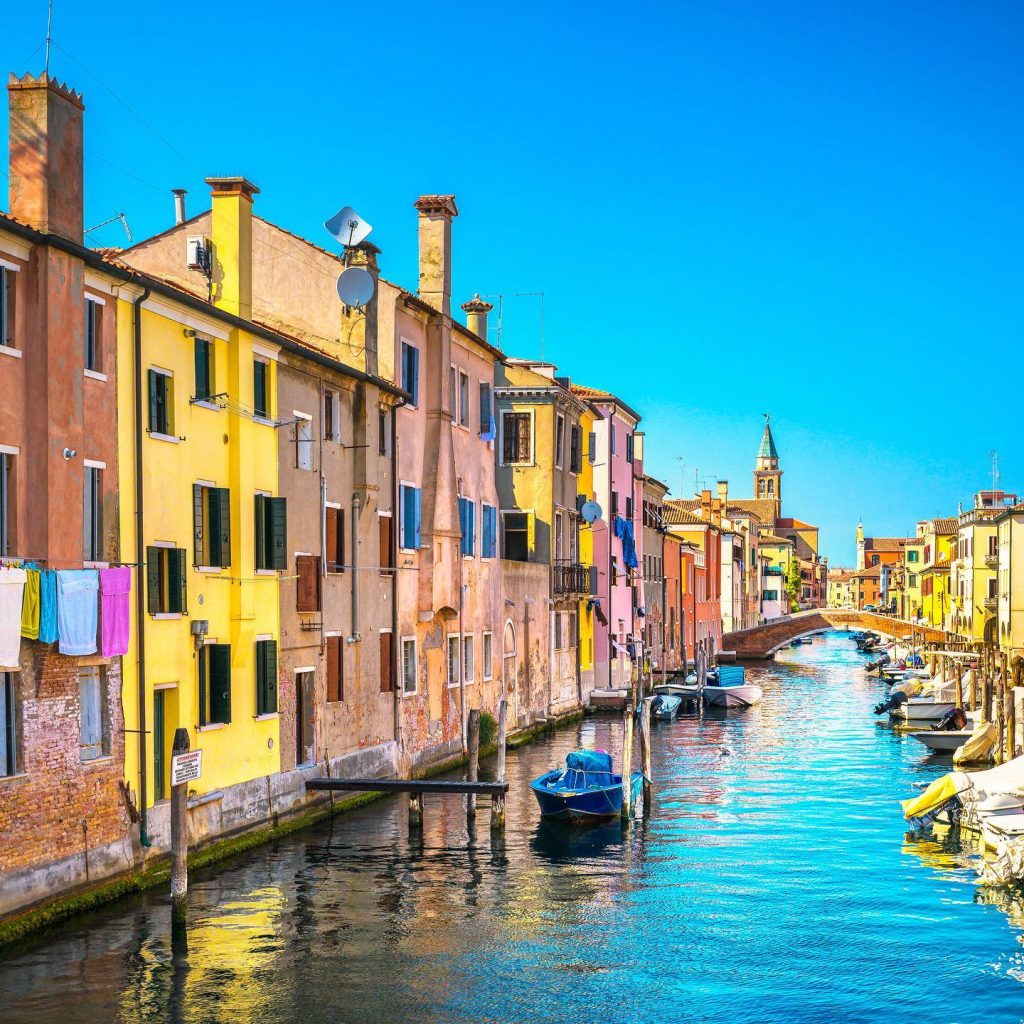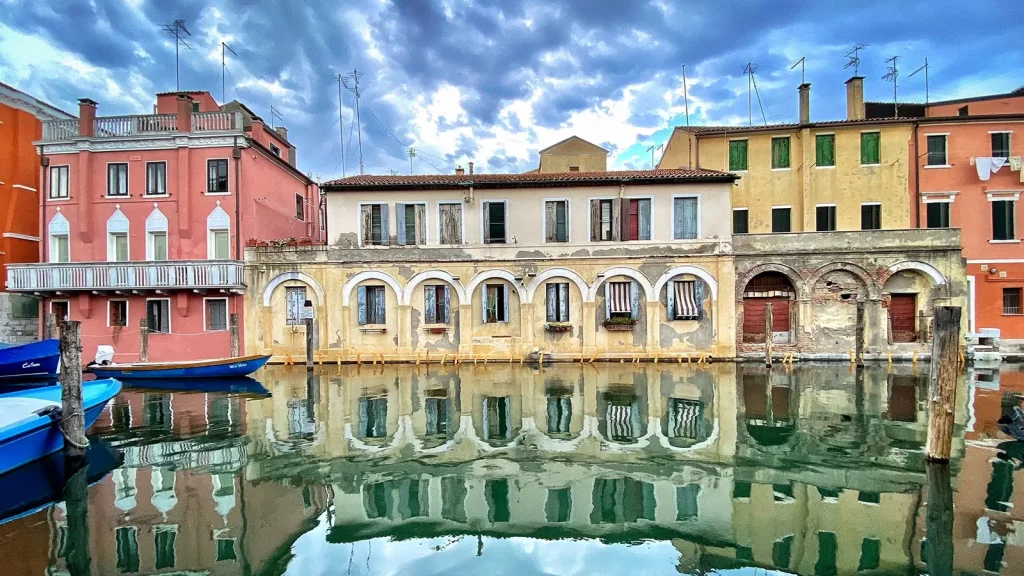What to see and What to do in Chioggia. Drink & Food, Best Hotels, Amazing Experiences…Italy2love leads you to Chioggia
Visit Chioggia
Chioggia is one of the most beautiful and interesting historical centers of Veneto, but not everyone knows its cultural beauties. In this article I’ll explain what to see in Chioggia in one day. You will discover a walking itinerary, which will take you from the splendid historic center of Chioggia to the beaches of the lagoon.
Chioggia is located in the Venice lagoon a few kilometers from the Serenissima. A dynamic city, which mixes architectural elegance with seafaring truthfulness.
What to see in Chioggia
Chioggia is located in the southern area of the Venice lagoon, between the Po Delta and the Serenissima.
Chioggia is less known, but also less inflated than Venice and this allows you to better appreciate the local culture. The memories of Carlo Goldoni and his theatrical comedy Le baruffe chiozzotte echo in Chioggia.
Here the hit and run tourism of Venice does not exist or if there is it disguises itself well. In Chioggia, tourism is moderate as in any other city of art in the Veneto, outside of Venice, where the flows of vacationers are often uncontrolled and exaggerated, putting the conservation of the urban cultural heritage at risk.
In Chioggia it’s a whole different story and this will allow you to experience magical moments and an extraordinary holiday.

Before telling you what to see in Chioggia, I want to remind you that you are about to visit the city of bridges, of waters (that of the lagoon and that of the mouths of the Brenta and Adige) and of films. In fact, many of the films set in Venice were shot here. In the end they are very similar, but Chioggia is much cheaper… even for film productions.
To understand what to see in Chioggia you have to go into the streets of the charming old town, the famous calli.
What to see in the historic center of Chioggia
The historic center of Chioggia is of medieval origin, it was rebuilt after the last battles against Genoa at the end of the fourteenth century.
Our itinerary on what to see in Chioggia starts from the Cathedral of Santa Maria, in the duomo district, immediately after Porta Garibaldi.
Until the early seventeenth century a medieval church stood on the same site, of which today only the remains of a sarcophagus from 1474 remain. The ancient church was destroyed by a ferocious fire and so it was decided to build a new cathedral.
The current structure of the Cathedral therefore dates back to the seventeenth century and was designed by Longhena, who built a church inspired by the architectures of Palladio.
Leaving the Cathedral, go into the heart of the historic center. Our second stop is the Torre di Sant’Andrea, a bell tower of about 30 meters, which in the Middle Ages, when it was built (10th-11th century), had defensive and control functions over the port of Chioggia.
Since 1389 it has housed one of the oldest tower clocks in the world and still fully functional today, whose authorship is attributable to the Dondi dall’Orologio family.
This tower is home to the Clock Museum set up along the seven floors of the bell tower. For up-to-date information on how to access, I recommend that you ask on the spot.

Shopping and Curiosity
We continue our itinerary to discover the things to see in Chioggia and arrive at perhaps the most famous point of the city: the fish market, the famous Pescheria.
Here every day comes all the fresh fish caught at night by local fishermen. A centuries-old tradition that is repeated every day. Locals, including many restaurateurs, flock to the first light of dawn to grab the freshest fish.
The only day you won’t see fish on the shoals is Monday, because the fishermen rest on Sundays.
Many tourists wonder what to buy in Chioggia, if you have the opportunity, I recommend that you buy the excellent freshly caught fish.
The monumental entrance is the work of Amleto Sartori and is known as Portale a Prisca, because the work is dedicated to a little girl, Prisca, who died at an early age to whom her loved ones wanted to dedicate the monument.
Once out of the fish market, look up and observe the splendid Palazzo Granaio, then head towards the docks of the port after which you can admire Ponte Vigo, one of the historical symbols of the city.
To continue the tour on what to see in Chioggia, cross the bridge and cross Calle Santa Croce and head towards the Church of San Domenico, which still retains the signs of high water.
This church houses the crucifix most dear to Chioggiotti, the so-called Christ of San Domenico, a symbol of centuries-old devotion to the saint.
Legend has it that the fishermen of the area found the crucifix and contributed to the dissemination of the image by reproducing it on the sails and on the prows, and distributing it to the inhabitants of Chioggia reproduced on fragments of wood taken from the wrecks.
Very beautiful, inside the church, is the work of Carpaccio with the depiction of St. Paul, which dates back to the early Renaissance. Also suggestive are the tolele, small ex-votos painted on the remains of the wrecks and donated by fishermen who escaped death after a shipwreck.
Exit the Church of San Domenico and stroll under the arcades that line Canal Vena. Walk under the stone archways and enjoy the show. The warehouses, with moorings for boats, people in the street, narrow and long streets, and the clothes hanging between the buildings, will take you into a unique atmosphere.
If you are wondering what to photograph in Chioggia, this is the most photogenic and suggestive point of the city in my opinion.

What to see in Sottomarina
We have seen what to see in Chioggia in the historic center, now let’s move to the sea, in the busiest area in the warm months.
Chioggia mare is called Sottomarina and is located north of the mouth of the Brenta between the Adriatic and the historic center. Chioggia and Sottomarina are connected by the long Ponte San Giacomo, which crosses the entire Union Island.
The Sottomarina beach is very popular in summer and is equipped with every comfort, from clubs to children’s games to beaches.
If you do not intend to stop at one of the bathing establishments, I recommend that you follow the promenade along the Sottomarina seafront to Forte San Felice.
This Fort was built in the mid-sixteenth century and has the typical star geometry of Renaissance fortifications. At the time it was one of the bulwarks protecting the harbor mouths.
Sottomarina is also a strategic point to move by sea to Venice or to the surrounding islands. The line 11 vaporetto connects Chioggia to Piazza San Marco via the island of Pellestrina.
Where to park in Chioggia
Parking in Chioggia is not easy. I therefore recommend two strategic places where you can leave your car and get to the historic center in no time.
In the port area you will find both an uncovered parking area and a covered multi-storey. Look at the map above to find them quickly and easily. Both are paid parking areas.
Where to sleep in Chioggia
We have seen what to see in Chioggia, where to eat and where to park the car, now let’s focus on staying overnight.
As with restaurants, you have to be very careful with hotels as well. There are beautiful ones, but also terribly dingy ones, where old furniture and mold create nauseating smells.
In my opinion, these are four of the best hotels and b & bs in Chioggia in terms of quality-price. To be on the safe side choose one of these:
Booking.com